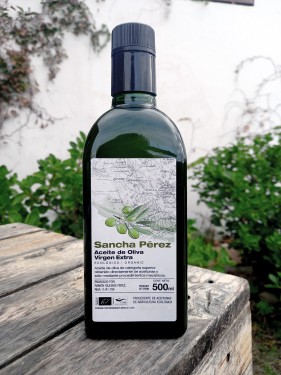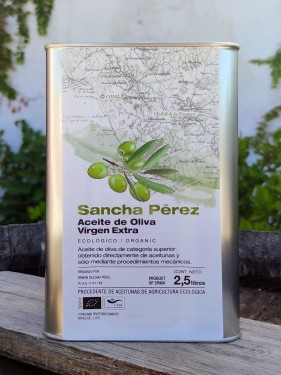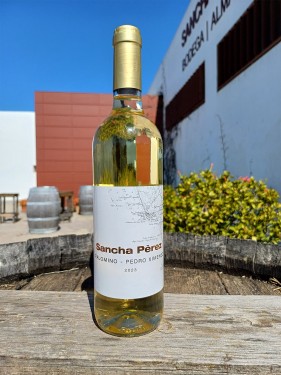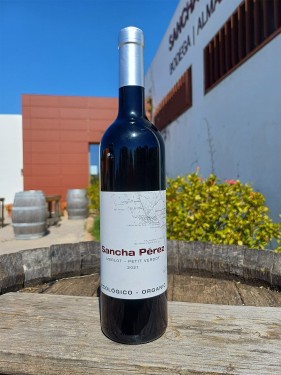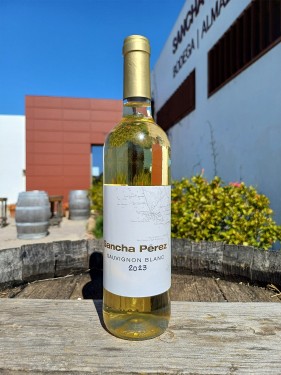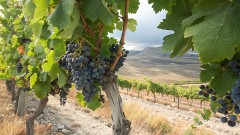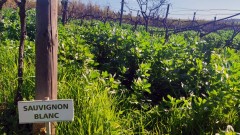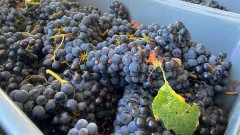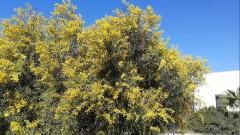
Source: Diario de Cádiz
The organic winery and oil mill Sancha Pérez revives the wine culture of La Janda
Most conversations about red wine eventually lead to opinions on Rioja and Ribera del Duero. Both are excellent designations of origin with great prestige and fame, both within and outside Spain. In fact, out of the more than 65 designations of origin in Spain, these two are probably the most well-known abroad—much like the common and simplistic association between Italy and Lambrusco made by non-experts.
However, without ever questioning the quality of these wines, it’s worth noting that other parts of Spain produce reds that are just as remarkable. Such is the case of red wine from Cádiz, a largely unknown gem whose revival began just a few years ago. This is a growing opinion, also held by entrepreneur Ramón Iglesias, who aims to bring back the tradition of red wine that was historically cultivated in the La Janda region: “The red wine from this province is on par with any other in Spain,” he explains.
Despite common assumptions, Cádiz has a long history of red wine production. It dates back to the 19th century, during the phylloxera crisis in Spain. This insect, brought from America, wiped out most European vineyards. In Spain, it also destroyed many grape varieties, including the reds grown in Cádiz. However, one variety survived the plague: Tintilla de Rota. This grape thrived in sandy soils, which the parasite couldn’t reach, leaving isolated pockets of the vine.
Ramón Iglesias now seeks to revive this grape variety and with it, restore the red wine culture of La Janda, which had virtually vanished in the second half of the 19th century and throughout the 20th: “The idea didn’t come out of nowhere,” says Iglesias. “There were already vines and olive trees here before the phylloxera,” he explains, referring to the writings of the Enlightenment figure Rojas Clemente, who documented the presence of the grape in the area.
Thus, in the countryside between Conil and Vejer, south of the Salado River, lies the Sancha Pérez Organic Winery and Oil Mill—a picturesque and striking landscape established by Iglesias to restore the local wine and olive oil culture.
Tintilla is undoubtedly one of the winery’s main prides. Since its inception, the winery has made successful efforts to recover it. This grape, along with Tempranillo, is among the varieties grown here, producing wines that are proving to be of excellent quality: “Red wine is making a comeback in Cádiz, asserting the potential of our land to produce wines as good as Riojas or Riberas,” says Iglesias.
Sancha Pérez is a rich and imposing estate that impresses visitors from the moment they enter. It spans 17 hectares of farmland near the Vejer coast, surrounded by wheat and sunflower fields. It appears as a biodiversity oasis, where olive trees and vines coexist with various fruit trees on otherwise monotonous land. From the rooftop of the winery building—a favorite viewpoint for visitors—you can see the ocean in the distance, seemingly just a step away from the vineyard rows. To the south of the small building, fruit trees grow beside neatly planted olive groves.
Olives are also a key focus at Sancha Pérez. Iglesias not only wants to revive winemaking but also introduce oil production to the region. The project began in 2008 with the first olive tree plantations. “There’s never been a strong oil production tradition in Cádiz, but we do have high-quality olives,” says Iglesias. He supports this budding tradition by educating local farmers, offering talks on how to properly produce olive oil: “We host meetings at the oil mill to teach locals how to handle olives for oil making.”
Driven by innovation, Iglesias is always creating, exploring both new ideas and traditional methods. Due to high demand from coastal restaurants for white wines—favored by tourists to pair with seafood—the winery recently planted white grape vines, with wine expected to be ready by 2015. But Iglesias didn’t stop at local varieties; he also planted Albariño, a Galician grape not known to be cultivated elsewhere in the province.
Despite new additions, Sancha Pérez currently markets only three wine varieties: two blends and one 100% Petit Verdot, a highly valued grape. All have been well received, and Iglesias doesn’t plan to add more red wines for now.
Sancha Pérez currently produces around 5,000 bottles per year, with plans to increase to 8,000 in 2014. As for oil, the mill processes not only its own olives but also those of small local landowners. This service, known as maquila (renting equipment to process one’s own produce), is offered to 55 neighbors so far.
All products have added value, as the entire production is organic. According to Iglesias, this is increasingly important. Though organic food consumption in Spain remains low, awareness is growing across Europe. Sancha Pérez committed early to this healthy and natural approach. Crops are managed without harmful chemicals or pesticides.
But the estate is not only agro-industrial—it also has a strong touristic and educational component. Sancha Pérez fits into the “creative tourism” model, where visitors actively participate in cultural activities and learn about local customs. The estate welcomes everyone, offering free guided tours that explain the project’s origins and the winemaking and oil processes. Crops are arranged so visitors can harvest seasonal fruit among the vines. No entry fee is charged—visitors pay only if they choose to buy. The winery also hosts events like the grape harvest and pruning festivals, engaging visitors in production while teaching them, with special attention to children who can help harvest or stomp grapes.
The constant, exciting exchange of species and crops between Europe and America nearly wiped out European vineyards. In the 19th century, an unknown plague began killing vines. Leaves withered, roots died slowly, and no remedy worked. It was later discovered that the culprit was phylloxera, a tiny yellow insect like an aphid, originating from North American vines. The pest arrived in France via imported American vine cuttings and spread across Europe, including Portugal and Switzerland. In Spain, it entered through Asturias, Girona, and Málaga. While it devastated many grape varieties, places like Rioja were hit later, allowing them to boost exports to affected regions like France. The social and economic toll was so severe that in 1881, the Berne Phylloxera Convention was held to harmonize pest-control laws across Europe. Eventually, the solution came by grafting American-resistant vines onto European ones. It took nearly 30 years to fully restore wine production.
MILA ALARCÓN
https://www.diariodecadiz.es/noticias-provincia-cadiz/vino-libre-cualquier-complejo_0_728327697.html

